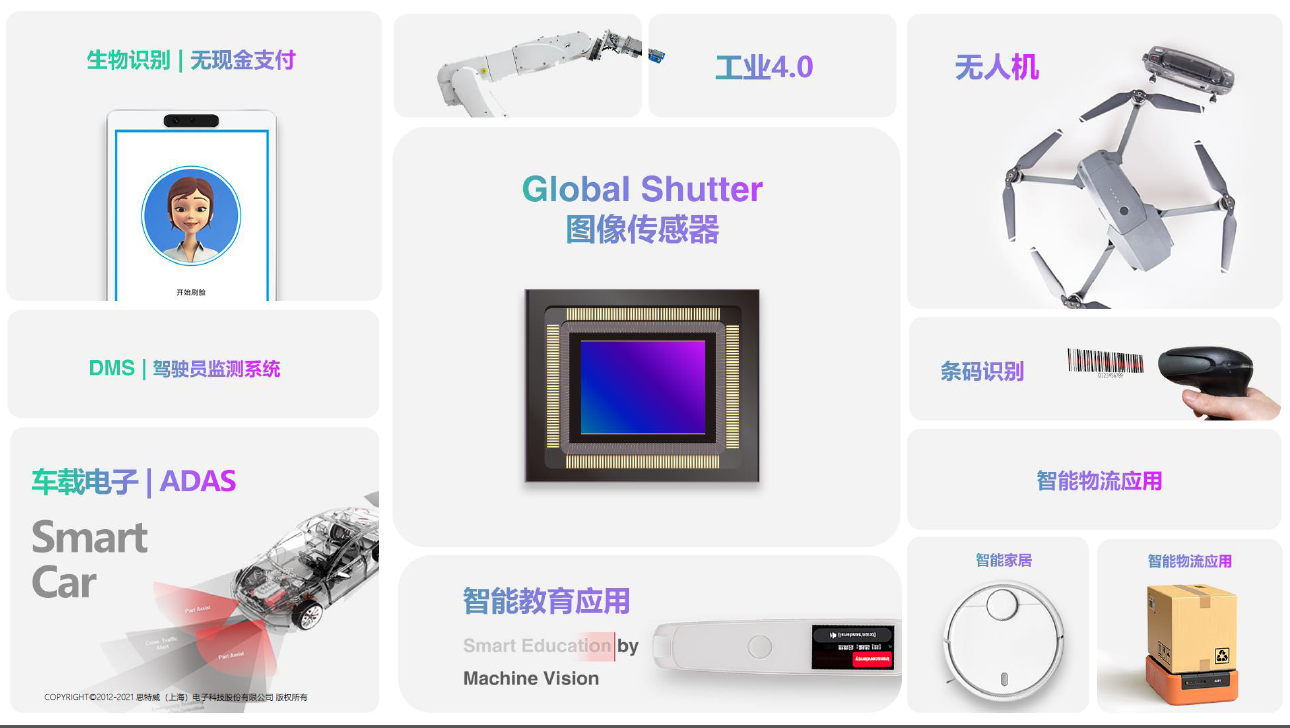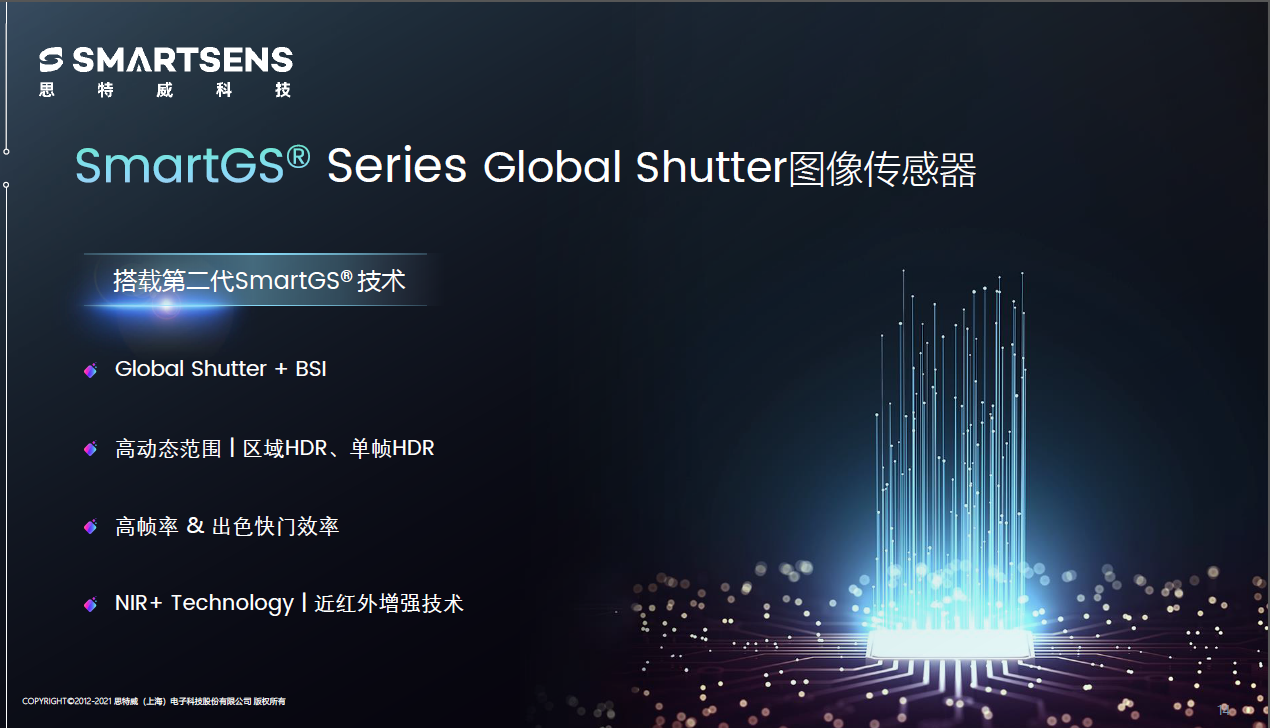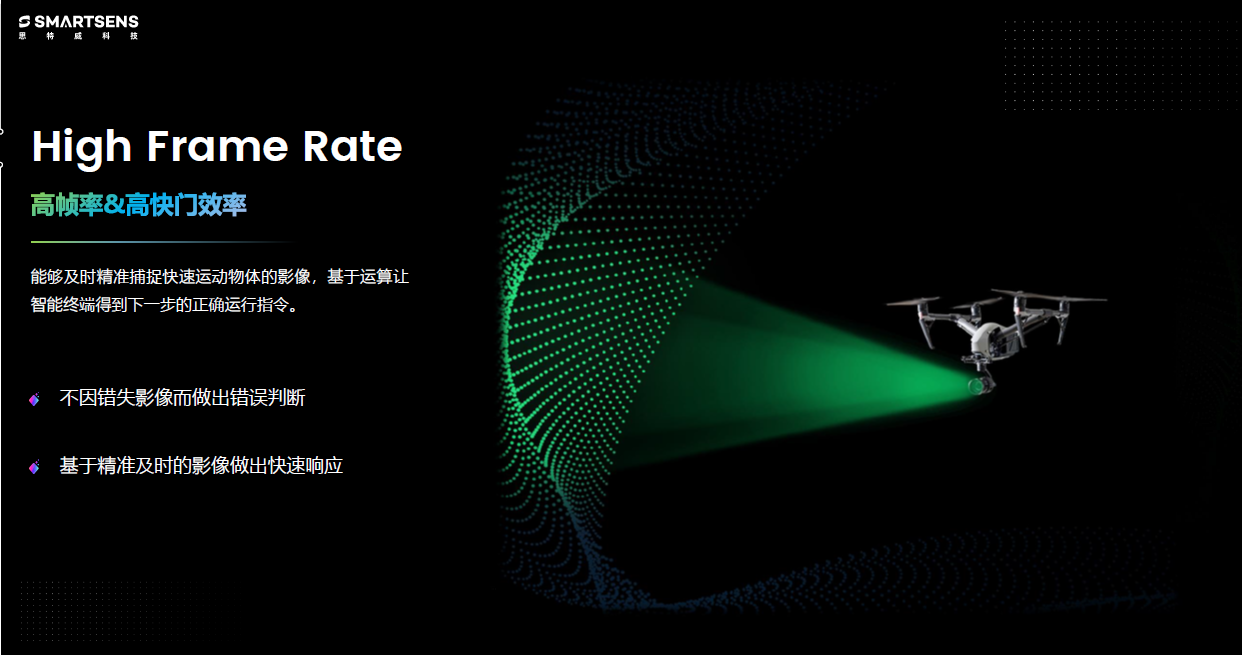"In the era of artificial intelligence (AI), many of the decisions and processing we make are implemented by machines. How do these CPUs and GPUs see the world? How do they feel the key information? In fact, this is an image sensor. What should be done." At the 2021 China IC Leadership Summit held on March 18, ASPENCORE Ouyang Jian, deputy general manager of Siteway (Shanghai) Electronic Technology Co., Ltd., made a presentation on the application of image sensors in the field of machine vision. Wonderful sharing.
In the AI+IoT era, more and more machine vision applications require smart terminals to accurately and quickly collect and process information. The image sensor is like the "eyes" of the machine, giving the machine the ability to perceive time.
The processing power of CPU and GPU is far beyond the human brain and human eye. Many images are now processed by AI CPU and GPU. It is very important to accurately capture images that are not deformed when objects are moving at high speeds. For example, the machine can reach a frame rate of 500 to 1000 frames per second during operation. When the human eye cannot quickly distinguish each frame of the image, the machine can quickly identify and find the object, thereby performing fast and automated operations. For another example, a household sweeping robot can intelligently avoid obstacles when cleaning a room. It uses machine vision technology to make accurate judgments on the layout of the room.
In addition, in a complex environment, everyone can use the camera to realize face payment. This application requires a high degree of security and requires very fine image processing. In addition, in the field of intelligent vehicles, whether it is ADAS, patrol records, or high-speed intelligent traffic supervision, they all have great demands on vehicle monitoring and capture.

In view of the above multiple applications, requirements are put forward on image processing technology. Ouyang Jian said that based on this market demand, Siteway launched the Global shutter sensor and the SmartGS® series of Global shutter image sensors.
According to Ouyang Jian's introduction, there were not many application scenarios for the Global Shutter sensor initially. "We have a simple logic that is to capture high-speed moving objects. Therefore, the application scenarios at that time mainly fell on intelligent obstacle avoidance. But with the increasing number of application cases of our partners and the ecological chain, Global The shutter series sensors have expanded into more new applications, including smart education applications, similar to smart translation pens."
Of course, now the Global Shutter series of sensors are the largest application scenario for drones. During high-speed operation, the drone may hit obstacles or "explode plane" if it is not operated properly. Since last year, the entire series of drones of a head drone company are equipped with intelligent obstacle avoidance functions. Most of the intelligent obstacle avoidance sensors used on its drones are from Siteway.
In addition to intelligent obstacle avoidance applications, Global shutter sensors are also used in the field of public safety, such as the driver's intelligent management system DMS to monitor whether the driver is fatigued and distracted. Ouyang Jian also added: “The commonly used drones now generally use binocular solutions, but when the drone is running, there will be eight directions, front, back, left, and right, and at least eight sensors are required for these eight directions. High-end drones will even be equipped with 12 smart global exposure sensors as standard, so this product has a very wide range of applications."

Global shutter's global exposure imaging technology has many advantages. Ouyang insisted that ordinary CIS uses Rolling shutter's exposure method in high-speed motion scenes, scanning line by line, and finally stitching a picture. In this process, there is a time delay, a jelly effect will appear, and the final image effect will be deformed. The machine vision AI chip cannot correctly recognize such pictures, nor can it recognize the text in the pictures.
The biggest feature of Global shutter global exposure products is-first, it can capture moving objects at high speed, without deformation and no tailing; second, Global shutter is based on BSI (back-illuminated) technology. "Image sensors used in smart phones with good photosensitivity are generally based on BSI technology. However, the integration of global exposure and BIS technology is very difficult. So far, we are the first company in the world to implement global exposure technology based on BSI technology. For one, the friends are mainly based on the FSI (front-illuminated) process." Ouyang Jian said proudly.

Ouyang Jian also showed pictures of the SmartGS® high-speed camera on the mountain road scene. He explained that the details of the license plate can be clearly seen from 80-90 meters away, which can help face recognition to capture all the information. If you don't use global exposure during quick snap shots, the final effect will be compromised. In the video taken with the SmartGS® high-speed camera, the wheels of the car are not deformed at 16 times slow motion. Any picture in the video is captured and handed over to machine vision and AI for recognition, and it will not cause misjudgment.
It is worth noting that taking pictures at night often encounters two different environments, bright and dark, which requires that the noise reading is well controlled and the sensitivity is high enough when taking pictures. Unnecessary noise is filtered out, and enough light can be felt, so that bright scenes do not overexpose, and dark scenes maintain details.
In the transportation field, traffic lights are high-frequency flashing LED lights. If the high-frequency flashing frequency is not processed, the captured information will be incomplete. According to Ouyang Jian, Siteway's products can provide different levels of exposure and central processing for different areas, so as to achieve the effect of partition processing.
The SmartGS® high-speed camera also supports multiple lane captures, which can significantly reduce system costs. "Similar cameras of a friend company may only support single-lane capture, which will cause the overall system cost to be very high." Ouyang Jian also revealed that the product was officially released yesterday (March 17) and will soon enter the mass production stage.

In addition, Siteway can also provide a variety of HDR solutions. Ouyang Jian revealed: "These solutions can avoid overexposure of traffic lights and help machines quickly identify objects. These products are the latest technology we launched in the past six months. In the future, we will also develop a new generation of products to provide higher resolution. High-speed, higher-pixel solutions.
Reprinted from International Electronic Business Information, the copyright belongs to the original author, if there is any infringement, please contact us to delete it!